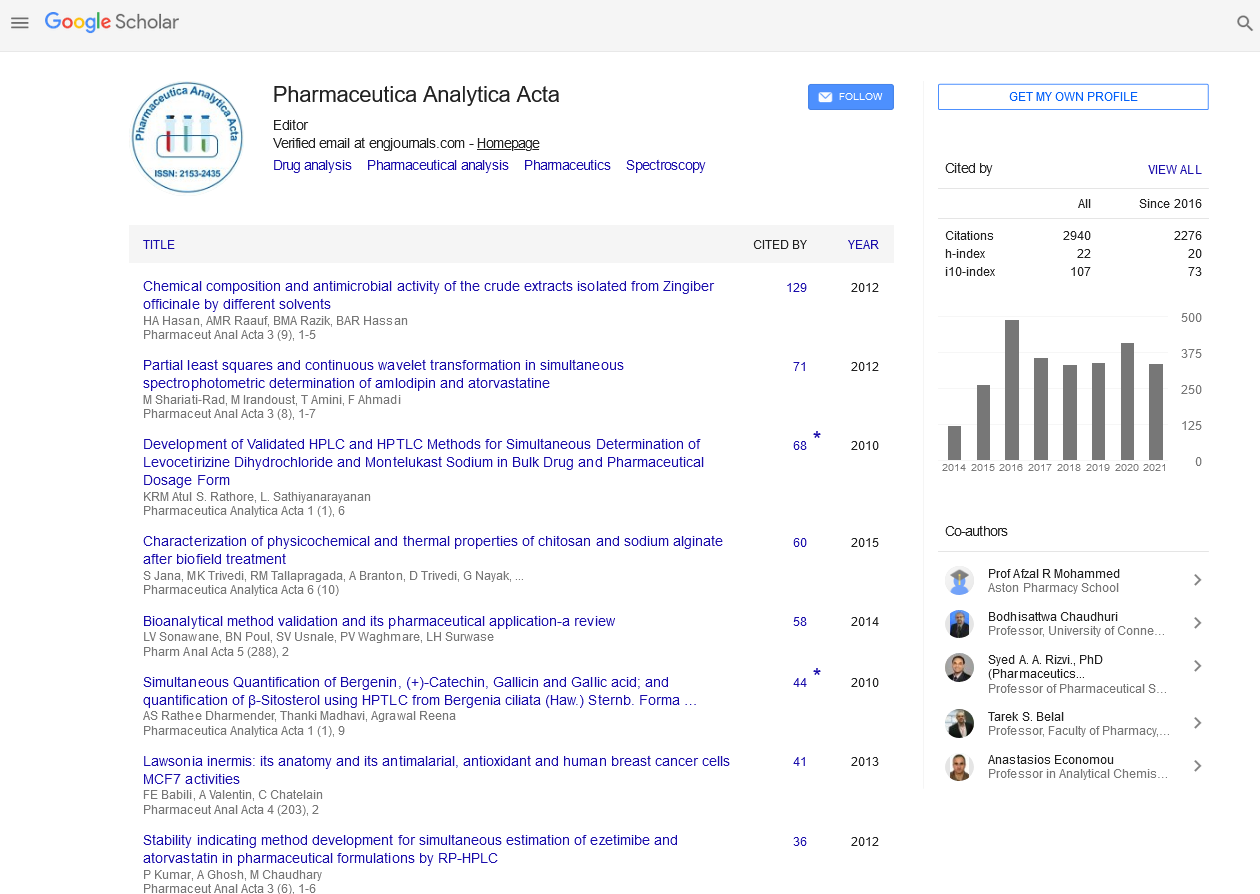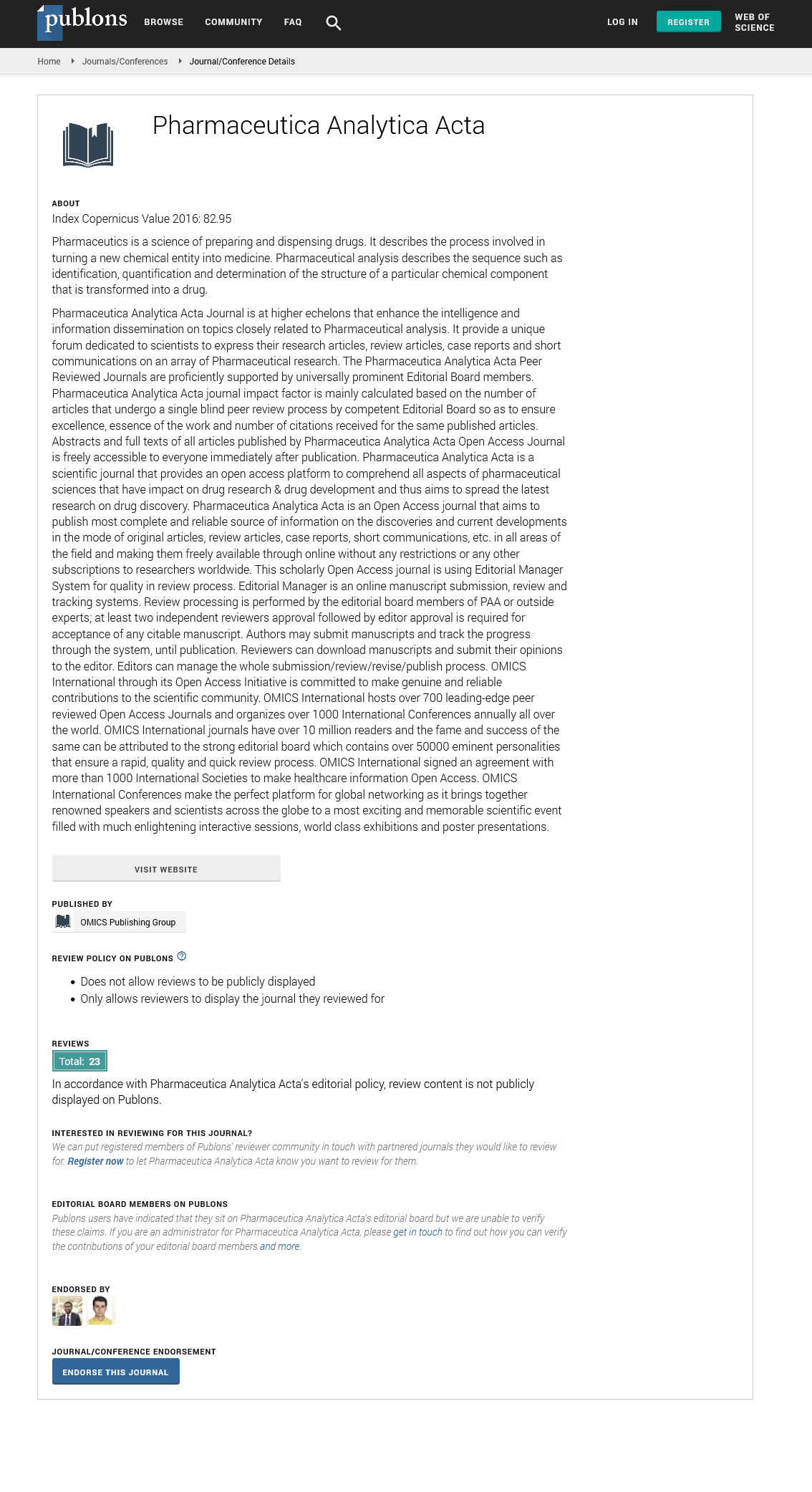Indexed In
- Open J Gate
- Genamics JournalSeek
- Academic Keys
- JournalTOCs
- The Global Impact Factor (GIF)
- China National Knowledge Infrastructure (CNKI)
- Ulrich's Periodicals Directory
- RefSeek
- Hamdard University
- EBSCO A-Z
- OCLC- WorldCat
- Publons
- Geneva Foundation for Medical Education and Research
- Euro Pub
- Google Scholar
Useful Links
Share This Page
Journal Flyer

Open Access Journals
- Agri and Aquaculture
- Biochemistry
- Bioinformatics & Systems Biology
- Business & Management
- Chemistry
- Clinical Sciences
- Engineering
- Food & Nutrition
- General Science
- Genetics & Molecular Biology
- Immunology & Microbiology
- Medical Sciences
- Neuroscience & Psychology
- Nursing & Health Care
- Pharmaceutical Sciences
Perspective - (2025) Volume 16, Issue 1
The Role of mRNA Technology in Developing Next-Generation Vaccines: Opportunities and Challenges
Yuki Takahashi*Received: 27-Dec-2024, Manuscript No. PAA-25-28595; Editor assigned: 30-Dec-2024, Pre QC No. PAA-25-28595 (PQ); Reviewed: 13-Jan-2025, QC No. PAA-25-28595; Revised: 20-Jan-2025, Manuscript No. PAA-25-28595 (R); Published: 27-Jan-2025, DOI: 10.35248/2153-2435.25.16.809
Description
The development of vaccines has long been a cornerstone of public health, enabling societies to control deadly infectious diseases. In recent years, messenger RNA (mRNA) technology has emerged as an exciting area of research, particularly for its potential in vaccine development. This approach, although relatively new in the context of widespread vaccine use, has shown significant potential in addressing global health crises. The use of mRNA in developing vaccines against diseases like COVID-19 has provided insight into the technology’s vast potential. However, while it opens up new possibilities, it also presents a range of obstacles that must be overcome to fully leverage its advantages.
One of the main benefits of mRNA-based vaccines is their ability to be developed quickly. Traditional vaccine development can take years or even decades, requiring the production of live or inactivated virus strains, which can be a lengthy process. In contrast, mRNA vaccines can be produced in a fraction of the time. Once the genetic sequence of the virus is known, researchers can rapidly design the mRNA sequence and begin vaccine production almost immediately. This accelerated timeline allows for faster responses to emerging diseases, as was demonstrated during the global pandemic.
Despite these advantages, there are challenges associated with the widespread application of mRNA technology. One of the most significant hurdles is the delivery mechanism. mRNA is inherently unstable and is easily degraded in the body. To ensure the mRNA reaches the appropriate cells without being destroyed, it must be encapsulated in lipid nanoparticles or other protective materials. The development of these delivery systems requires advanced formulation techniques and the stability of the vaccine in various environmental conditions remains an ongoing area of research. The temperature requirements for storing and transporting mRNA vaccines, especially in developing countries, have highlighted the logistical difficulties of deploying these vaccines globally.
Additionally, while mRNA vaccines have shown great potential in fighting infectious diseases, they have not yet been tested on a large scale for all types of diseases. Their use is primarily focused on viral infections, but the technology's potential for combating bacterial infections, cancer and other non-viral diseases is still being explored. The immune response generated by mRNA vaccines is primarily focused on protein production, but the development of vaccines for diseases requiring a different type of immune response may require further modifications to the technology.
There are also concerns surrounding the safety of mRNA vaccines in the long term. While clinical trials have demonstrated that these vaccines are generally safe, long-term data is still limited. The full spectrum of side effects and potential risks associated with mRNA-based vaccines remains an area of active investigation. Although the technology has undergone rigorous testing, the novelty of this platform means that scientists are still working to understand its full impact on human health. Researchers continue to monitor the effects of the vaccines, especially as more people receive them, to ensure that any potential adverse effects are identified and addressed swiftly.
In conclusion, mRNA technology represents a significant shift in the field of vaccine development. Its ability to quickly produce vaccines in response to emerging diseases has proven invaluable in recent global health challenges. However, for mRNA vaccines to be fully integrated into public health strategies worldwide, ongoing work is needed to address the technical, logistical and safety challenges that remain. With continued research, this innovative approach could revolutionize the way we prevent and treat infectious diseases, as well as expand the possibilities for combating a broader range of medical conditions.
Citation: Takahashi Y (2025). The Role of mRNA Technology in Developing Next-Generation Vaccines: Opportunities and Challenges. Pharm Anal Acta. 16:809.
Copyright: © 2025 Takahashi Y. This is an open access article distributed under the terms of the Creative Commons Attribution License, which permits unrestricted use, distribution and reproduction in any medium, provided the original author and source are credited.


